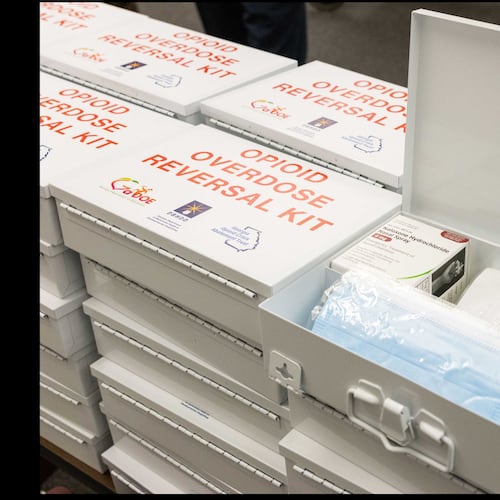Georgia Tech has unveiled a new campus plan to plot out the future of its Atlanta grounds and buildings over the next decade.
The recently finalized 2023 Comprehensive Campus Plan will guide how the campus grows. The 130-page document envisions a vehicle-free core that emphasizes getting around on foot, bicycle and by shuttle. The plan also anticipates new student amenities, from expanded athletics facilities to more housing. It includes reopening a tunnel to connect to Midtown and a possible new performing arts center.
The plan calls for an additional 2.23 million gross square feet to meet academic, research and workplace needs. New research and academic facilities could fill in surface parking areas along Hemphill Avenue and Ferst Drive, the document suggests. Some existing academic buildings — such as the Rich Computer Center and the Montgomery Knight Building — could be redeveloped with new buildings occupying similar footprints.
Some building design and construction could begin within a year or two, and the plan covers the next 10 years.
Here are the plan’s highlights:
Why does Georgia Tech need this plan?
Credit: Georgia Tech
Credit: Georgia Tech
Georgia Tech expects a 26% increase in on-campus students over the next 10 years, which will result in more faculty and staff on campus as well.
The school’s total enrollment has increased significantly over the last five years, though many graduate students learn online. The school enrolled nearly 48,000 students this fall, with just over half studying on the Atlanta campus. Georgia Tech expects the number of students on its Atlanta campus to grow to 31,853 by 2031.
Just because something is included in the new plan doesn’t mean it is guaranteed to get built. Some components are aspirational and will vary based on how the school grows and uses existing buildings, said Maria Cimilluca, vice president for infrastructure and sustainability.
What’s in the plan for students?
The plan forecasts a need for about 1,500 more beds for students, Cimilluca said.
The school has already started to address that need when it received authorization in February from the Georgia Board of Regents to build a $117 million, 862-bed residence hall on Northside Drive. That new residence hall will give the school more space to accommodate students, allowing older halls to move offline for renovation, said Cimilluca.
The plan also calls for a strategic expansion of campus dining operations.
What about recreation and sports?
Many of Georgia Tech’s recreational facilities are already crowded.
The plan envisions adding more places for students to hang out, work out and play. That could include a new student wellness hub between the student center and the Stamps Health Services building, according to a video presentation released by Georgia Tech.
The document also envisions recreational spaces with indoor jogging lanes and courts for basketball, racquetball, volleyball and roller hockey. Other spaces could include an esports arena and more outdoor courts. A field hockey facility or NCAA-sized soccer stadium could expand women’s sports.
What about performing arts?
The plan raises the possibility of replacing or redevelopment the Ferst Center for the Arts, which includes a more than 900-seat theater that hosts performances, films and lectures.
Cimilluca said school officials are talking with other Atlanta venues and cultural organizations about how a new performing arts center on campus could help with their missions and programming.
A new center would allow for “the redevelopment” of the Ferst Center, “which will further facilitate the completion of State Street as a primary north/south connecting route through campus,” the plan states. The plan recommends the new facility serve as an anchor for the “Arts Square” area, which is sandwiched between the “Academic Core” part of campus and the North Avenue Research Area.
A new facility would be designed to help students learn career skills to work in Georgia’s growing arts industry, where students get experience with lighting, film, digital music and recording, Cimilluca said.
Welcome to Georgia Tech?
Credit: HYOSUB SHIN / AJC
Credit: HYOSUB SHIN / AJC
A new welcome and visitors center would create a focal gateway for Georgia Tech along North Avenue.
The idea is to create a space across from Bobby Dodd Stadium to create a “front door” entrance to campus to welcome visitors, prospective students and alumni by reusing surface-level parking to be more purposeful. It would be near the alumni house and a potential new mixed-use development.
The plan also envisions reopening the Third Street tunnel under I-75/I-85 and creating a 4th Street pedestrian bridge to better link the campus to Midtown.
The tunnel is currently open on football game days. Opening the tunnel for additional hours would make it easier for students and employees to get to MARTA stations and housing on the other side of the interstate, said Cimilluca.
Car-free core
Credit: Georgia Tech campus plan
Credit: Georgia Tech campus plan
The plan envisions a vehicle-free core on the Atlanta campus that prioritizes travel by foot, bicycle and shuttle.
Students could hop on an electric shuttle to get to the heart of campus.
Georgia Tech currently has more than 13,000 parking spaces spread out over dozens of lots, garages and streets. The plan would add no net new parking but could relocate or reconfigure some of the parking sites. For example, the Peters Parking Deck could be demolished and redeveloped as Peters Park to create more open space.
What comes next?
Credit: John Spink/AJC
Credit: John Spink/AJC
Next up for Georgia Tech officials: More planning.
Cimilluca said additional reviews are taking place to dive deeper into athletics, transportation, historic preservation of buildings, housing and other aspects of the campus plan.
The plan doesn’t require Georgia Tech to acquire additional property. Some one-and-two story buildings could be torn down and replaced with taller buildings. The school also could look at leasing options.
Georgia Tech has not yet totaled up how much all components of the new plan could cost. Funding could come from a mix of public and private dollars. The Georgia Board of Regents also will need to approve aspects of the plan.
About the Author
Keep Reading
The Latest
Featured








